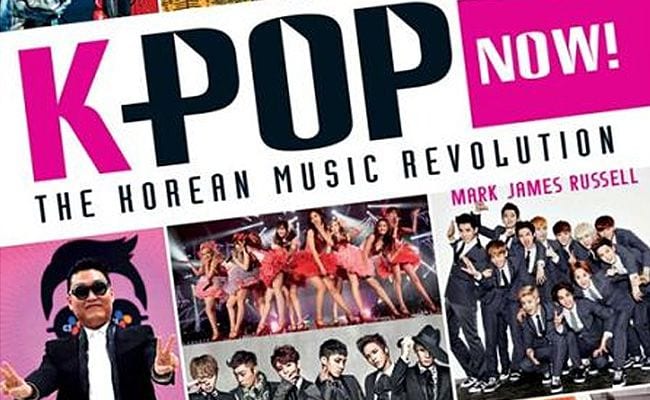
Some months ago, I was strolling through the garish and bustling heart of Toronto’s ‘Koreatown’ when I came upon a shop I had never noticed before. Curious, I stepped inside – and into what immediately appeared to be a show-down between Korea’s traditional and modern identities.
The quiet, austere shop was divided almost directly down the middle: on the one side were shelves full of ornate stationary; leather-bound journals and dayplanners for businessmen; intricately painted fans and tea-cups and other traditional ephemera. On the other side of the shop, the wall was emblazoned with boy-band posters; shelves were full of K-pop artist collector cards; and an array of seizure-inducing magazine covers illuminated the corner shelving.
The shopclerk, a bespectacled, older middle-aged man attired in a cleanly pressed dress shirt, looked up at me expectantly from the counter, which was located directly in the no-man’s land between these two warring cultural industries.
“Can I help you?” he asked, with the barest of Korean accents.
“Just looking,” I replied, enraptured. I pounced upon the counter, and began poring through anime stickers (my new laptop still had some empty space to cover on the casing). “When did you open?” I asked, politely. “You must be new?”
The clerk sputtered in indignation. “No!” he proclaimed. Then he hung his head sadly. “We’re one of the oldest shops on the block,” he said. “But it seems many Canadians are only discovering us now.”
The entire scenario was an apt metaphor for K-Pop, the music craze with roots going back at least two decades, but which has only begun overwhelming North American pop culture shores in the past couple of years. It, too, has complicated roots that are becoming ever obscured in its tangled, globalized present. And all of it is now caught up in a commercial frenzy that seems to brook no patience for the typical identity markers – authenticity, clearly defined parameters – of your average musical genre.
Mark James Russell seeks to unravel some of the garish tangle surrounding K-Pop in his new fan book K-Pop Now!: The Korean Music Revolution. The book is a very basic introduction to K-Pop, designed mostly for the interested novice or the neophyte fan. Lavishly illustrated with full-colour photos, it’s the literary equivalent of a K-Pop disco night itself: “a hyperactive style…where you often get just minute segments of a song before the deejay quickly moves on to something else. Apparently, even pop songs are not fast enough for the high-speed pace of young Korean people today.”
Russell has been an observer and commentator on the scene since 1996, so he should know. The book runs to 128 pages, just over half of which comprises 2-4 page spreads on well-known K-pop bands and artists. The opening chapter sets the scene with a brief survey of Seoul’s neighbourhoods, followed by a brief history and stylistic analysis of K-pop (which Russell quite confidently dates to 23 March 1992: the first album release by Seo Taiji and the Boys).
While fans might quibble over what bands to include and which to leave out in a survey of this nature, the few dozen artists presented here provide a reasonable introduction to an eclectic and vibrant scene. They also offer a tantalizing hint of the idiosyncrasies which attract growing numbers of fans. From EXO (the band with two different line-ups: one for Korea, and one for China), to CN Blue (the boy band considered unique for playing their own instruments), to Brown Eyed Girls (the girl group considered unique for writing many of their own songs), to Yoon Mi-Rae (aka Tasha, the part-American, part-Korean solo artist who both survived the disintegration of her initial band, as well as the complex stigma of growing up with a mixed-race identity), the artists presented here provide an insightful glimpse into the inner complexity of what new fans might wrongly consider a superficial and simplistic scene.
Indeed, one of the unique dimensions of K-pop is the Dr. Who-like quality of its bands: the entire cast and lineup of a band can change without fans batting an eye, so long as the new stars provide an equally entertaining and quality presence. Yet, as Russell reveals, it’s a given that any artists who do make it to the top have undergone a training just as grueling as that of any other industry’s celebrity stars.
In addition to double-page feature spreads on 15 of the top boy bands, 13 girl groups, and six solo artists, the text also features interviews with Simon and Martina Stawski (the Canadian couple who run the wildly popular Eat Your Kimchi website), and K-pop stars Kevin Kim (from Ze:A) and Brian Joo (Fly to the Sky). The book concludes with some brief speculations on K-pop’s future and some up-and-coming bands to watch out for, and brief closing advice for travelers to Korea.
The final page is, perhaps, a hint. Featuring advice on ‘Traveling to Korea’, there’s an implicit message here. Want to learn more about K-pop? Then go to the source.
The book offers a fun ride through the world of K-pop. There’s not much here for the seasoned fan or serious pop culture student (Russell earned his academic pop culture street cred with his 2008 publication, Pop Goes Korea, which is well worth checking out for more serious students of the topic), but it’s a fun reference and introductory guide to the scene. For those who are curious about what K-pop is all about, or who want to explore the scene but don’t know where to begin, K-Pop Now! offers a clear, easy, visually appealing point of entry to one of the most active and fascinating scenes in the rapidly rising Asian music industry.

